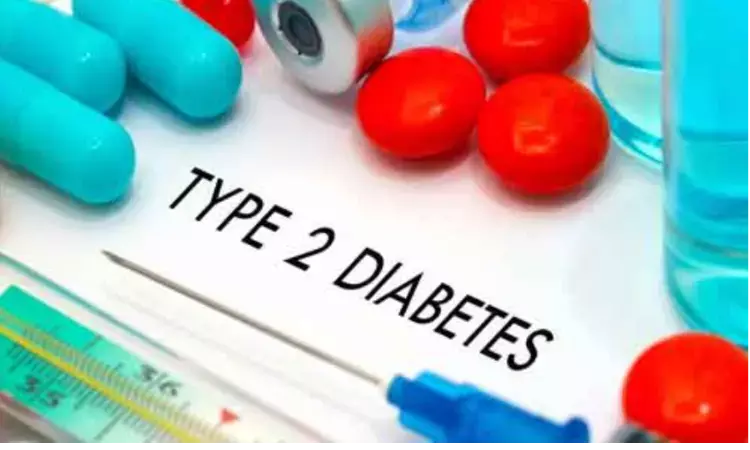- Home
- Medical news & Guidelines
- Anesthesiology
- Cardiology and CTVS
- Critical Care
- Dentistry
- Dermatology
- Diabetes and Endocrinology
- ENT
- Gastroenterology
- Medicine
- Nephrology
- Neurology
- Obstretics-Gynaecology
- Oncology
- Ophthalmology
- Orthopaedics
- Pediatrics-Neonatology
- Psychiatry
- Pulmonology
- Radiology
- Surgery
- Urology
- Laboratory Medicine
- Diet
- Nursing
- Paramedical
- Physiotherapy
- Health news
- Fact Check
- Bone Health Fact Check
- Brain Health Fact Check
- Cancer Related Fact Check
- Child Care Fact Check
- Dental and oral health fact check
- Diabetes and metabolic health fact check
- Diet and Nutrition Fact Check
- Eye and ENT Care Fact Check
- Fitness fact check
- Gut health fact check
- Heart health fact check
- Kidney health fact check
- Medical education fact check
- Men's health fact check
- Respiratory fact check
- Skin and hair care fact check
- Vaccine and Immunization fact check
- Women's health fact check
- AYUSH
- State News
- Andaman and Nicobar Islands
- Andhra Pradesh
- Arunachal Pradesh
- Assam
- Bihar
- Chandigarh
- Chattisgarh
- Dadra and Nagar Haveli
- Daman and Diu
- Delhi
- Goa
- Gujarat
- Haryana
- Himachal Pradesh
- Jammu & Kashmir
- Jharkhand
- Karnataka
- Kerala
- Ladakh
- Lakshadweep
- Madhya Pradesh
- Maharashtra
- Manipur
- Meghalaya
- Mizoram
- Nagaland
- Odisha
- Puducherry
- Punjab
- Rajasthan
- Sikkim
- Tamil Nadu
- Telangana
- Tripura
- Uttar Pradesh
- Uttrakhand
- West Bengal
- Medical Education
- Industry
Bigger waistlines increase risk of fibrosis in diabetes patients with NAFLD: Study

Larger waistlines are linked to progression of non-alcoholic fatty liver disease (NAFLD) in people with type 2 diabetes (T2D), finds study. Each 1cm increase in waist circumference was associated with a 5% higher likelihood of developing advanced fibrosis, a late stage of NAFLD.
The new research has been presented at the Annual Meeting of the European Association for the Study of Diabetes (EASD).
NAFLD, in which fat builds up in the liver can progress to serious liver damage, including advanced fibrosis - potentially life-threatening scarring of the liver.
It is already known that that up to 15-20% of those with T2D have advanced fibrosis. But little is known about what effect, if any, it has on the complications of diabetes.
Dr Tiphaine Vidal-Trécan, of Lariboisiere Hospital, Paris, France, and colleagues studied the relationship in 684 T2D patients.
The participants had an average age of 61, a BMI of 28.7 and a waist circumference of 104cm. 59% were male.
Vibration-controlled transient elastography scans (a form of ultrasound) showed that 74.5% had NAFLD. In 12.4% of the participants it had progressed to advanced fibrosis.
24.8% of the participants had macrovascular complications of T2D, such as heart disease. 20.5% had retinopathy (damage to the blood vessels of the retina); 39.4% had neuropathy (nerve damage); and 38.3% had nephropathy (kidney disease).
Analysis revealed nephropathy to be significantly more common in those with advanced fibrosis than the other T2D patients. 52.1% of those with advanced fibrosis had nephropathy, compared to 36.3% of the other T2D patients. The study's authors say that more research is needed to confirm this link.
Rates of the other complications (macrovascular, retinopathy and neuropathy) did not differ between those with advanced fibrosis and the other T2D patients. Again, more research is needed to confirm this.
The study also found that every 1cm increase in waistline was associated with a 5% increase in the likelihood of the participants developing advanced fibrosis.
Higher levels of AST, a marker of liver damage, were also associated with higher odds of advanced fibrosis.
Dr Vidal-Trécan concludes: "Doctors treating people with type 2 diabetes should be aware of these links and check for advanced fibrosis when their waist circumference or level of AST is high.
"A large waist circumference is linked to metabolic syndrome and fat accumulation in abdomen, which can lead to NAFLD.
Hina Zahid Joined Medical Dialogue in 2017 with a passion to work as a Reporter. She coordinates with various national and international journals and association and covers all the stories related to Medical guidelines, Medical Journals, rare medical surgeries as well as all the updates in the medical field. Email: editorial@medicaldialogues.in. Contact no. 011-43720751
Dr Kamal Kant Kohli-MBBS, DTCD- a chest specialist with more than 30 years of practice and a flair for writing clinical articles, Dr Kamal Kant Kohli joined Medical Dialogues as a Chief Editor of Medical News. Besides writing articles, as an editor, he proofreads and verifies all the medical content published on Medical Dialogues including those coming from journals, studies,medical conferences,guidelines etc. Email: drkohli@medicaldialogues.in. Contact no. 011-43720751


